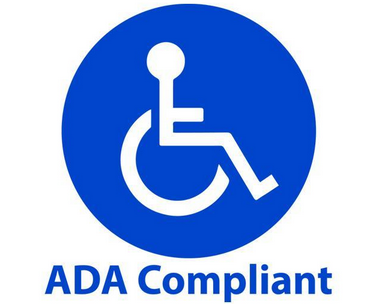
Did you know that under the Americans with Disabilities Act (ADA) a business is considered “a place of public accommodation” and is required to provide equal access to individuals with visual, hearing, and mobility impairments? Furthermore, the Department of Justice has made it clear that these requirements apply to any publicly accessed website, regardless of if the business or organization has a physical location or operates solely on the internet. Now, more than ever, is it important to ensure your website is ADA compliant. Failure to do so could result in fines, litigation, and loss of customers.
So, how do you make sure your website is ADA compliant? By recognizing some common problems outlined by the ADA Best Practices Toolkit, and implementing creative solutions to help people who can’t see, hear, or use a traditional mouse access your website.
Problem: Posting an image or chart without a text description can make it inaccessible for people with vision disabilities. (PDFs and image based documents can also be challenging.)
Solution: Include a meaningful textual description with every image, even something as condensed as a single sentence. Adding a description makes visual materials accessible for individuals who use screen readers, which can only speak the text of a website.This can be done simply, with a single additional line in HTML for each image, or by providing a text only option for longer uploaded documents.
Problem: Some websites are coded to make it impossible to change font size or color.
Solution: Individuals with low vision often need larger font and high contrast colors to help them view a website. Most do this through their browser settings, which have been calibrated specifically to increase access. When designing your website, be mindful of the parameters that different browsers and settings may require from your site.
Problem: Video content needs to have audio, visual, and text descriptions to make it accessible to individuals with visual and hearing disabilities.
Solution: When adding videos to your website, be sure that they are all captioned in high contrasting, easily read text. Additionally, they should have audio tracks that make it clear what the video is. To learn more about creating accessible video content, check out this article from the University of Washington.
Updating your website to be ADA compliant is more than a way to keep out of legal trouble; it’s good for business. Providing equal access shows your users that you’re socially conscience, and that you recognize the beautiful variation and uniqueness of all people that use your products or services.
-
Dotlogics can help you be ADA compliant on your current website or in your next redesign. Contact us to receive a quote. Equal access can’t wait.
Let's Get to Work.
Have an unsolvable problem or audacious idea?
